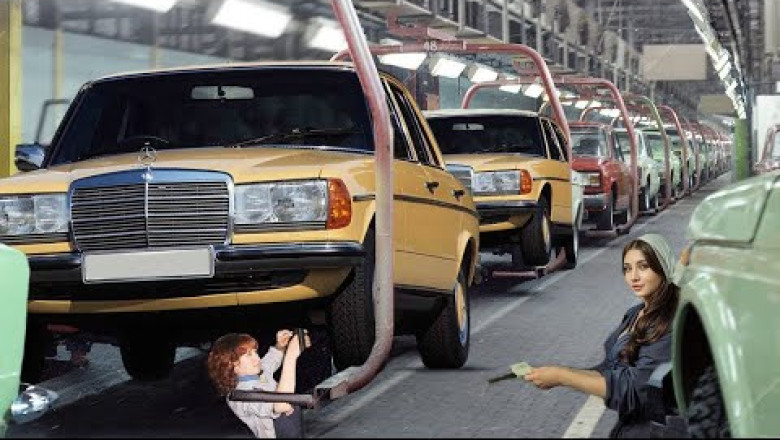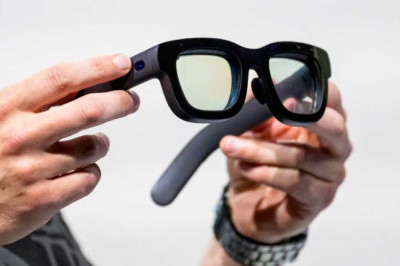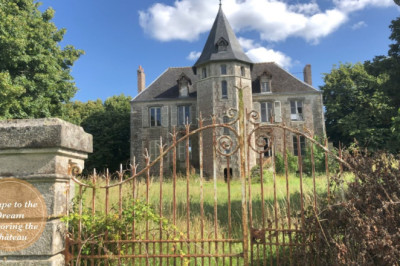
views
Mercedes S-Class W116 Production line 70s Inside Sindelfingen factory: Retro Assembly line (Germany)
Mercedes S-Class W116 Production line 70s Inside Sindelfingen factory: Retro Assembly line (Germany)
Step back in time with this captivating historical documentary showcasing the golden era of German automotive excellence. From the iconic Mercedes-Benz W116 S-Class assembled at the Sindelfingen plant, to the retro-futuristic precision of BMW’s early production line, this film is a nostalgic deep dive into the craftsmanship that shaped two of Germany’s most legendary car brands.
🔧 Mercedes-Benz W116 Assembly – Sindelfingen, West Germany
The documentary opens with stunning archival footage inside Mercedes-Benz's Sindelfingen plant, where the W116 S-Class—a paragon of luxury and engineering—was meticulously hand-assembled in the 1970s. Chrome-trimmed grilles, hand-fitted interior panels, and the iconic mechanical overengineering all come to life as workers, dressed in blue coveralls, move seamlessly from one task to the next in a harmonious ballet of precision.
This wasn’t just any luxury car—it was the first production vehicle to offer a four-wheel electronic anti-lock braking system (ABS) from Bosch, debuting in 1978. With 473,035 units produced, the W116 laid the foundation for everything the S-Class would become: safety, innovation, and executive prestige.
🔄 W116 vs W126 – A Legacy in Transition
The documentary briefly contrasts the W116 with its successor, the W126, which took the reins in 1979. Here's the short breakdown:
-
W116: Elegant and full of chrome, embodying the bold, classic 70s aesthetic.
-
W126: Introduced under the eye of design legend Bruno Sacco, replacing chrome with tasteful plastic trim, sleeker profiles, and improved aerodynamics.
While the W126 is often considered peak Mercedes-Benz design, the W116 remains a cult classic, admired for its stately presence and timeless engineering.
As one narrator puts it, comparing W116 and W126 is “like choosing a favorite child—you just can’t.”
🏭 BMW Retro Factory Tour – The Birth of Bavarian Legends
The film then takes us on a tour through BMW’s early post-war manufacturing in Munich, where cars like the BMW 501 were built by hand. Before this, BMW manufactured cars at the Eisenach plant until 1941. But after the war, with the brand divided by geopolitics and rebuilding its identity, the BMW 501 marked a fresh start.
This model was a spiritual successor to the pre-war BMW 326, and the documentary shows how early Munich production combined classic coachbuilding techniques with forward-looking design elements—an important moment in the rebirth of BMW.
You'll see workers hammering body panels, crafting wooden molds, and installing mechanical components with care, patience, and unmistakable pride. This era represents the fusion of craftsmanship and innovation, setting the stage for BMW’s global rise in the decades to follow.
🛠 Step-by-Step Manufacturing Highlights
-
Body Assembly: Each frame is hand-welded with precision, revealing how labor-intensive early car manufacturing truly was.
-
Paint Process: Multiple coats and hand-polishing showcase the attention to detail.
-
Interior Fitting: Craftsmen align wood trim, leather, and instrumentation with exacting standards.
-
Engine Installation: Powerplants are mated to the chassis with reverence—a far cry from today’s automation.
📺 Why Watch This?
This documentary is a must-watch for classic car lovers, history buffs, and anyone fascinated by industrial heritage. It offers more than nostalgia—it’s a powerful reminder of the human hands behind legendary machines. Whether you lean Mercedes or BMW, chrome or plastic, this film celebrates the era where engineering met artistry.




















Comments
0 comment